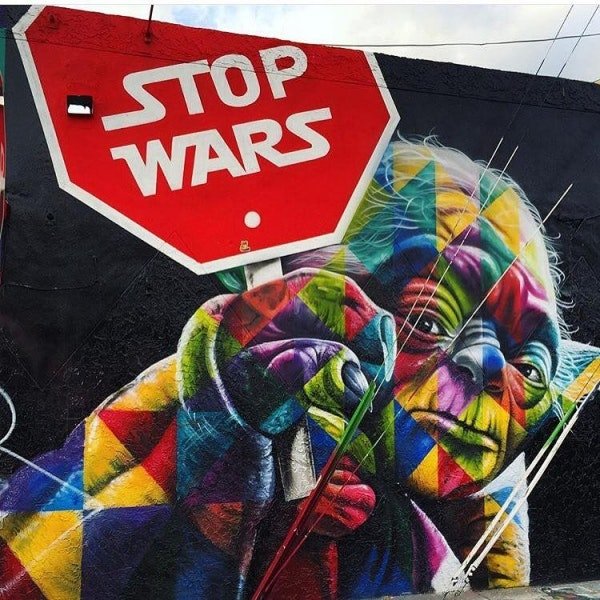Culture.
It has been written that culture eats strategy for breakfast and that culture is a great differentiator among companies.
If you query Google on “What is a good company culture?” you will get billions of results (6, 250,000,000!) and if you clicked on the links of the results on the first page you would have a list of over 100 different keys to culture.
Purpose, values, mission, respect, freedom, quality of leadership, great compensation, high growth, flexibility, diversity, multi-stakeholder capitalism and on and on the list goes.
Today as firms struggle with attracting and retaining workers they worry about culture.
A reason to get people back to the office is to make sure that there is no loss of “culture”.
But what exactly makes for a good company culture?
Study firm after firm and analysis after analysis and if one looks carefully there are four keys to culture.
A commitment to excellence.
A growth mindset.
Clarity of communication.
Connectedness.
Photography by Whitney Lewis- Smith
A Commitment to excellence.
Successful companies are committed to excelling in three areas above all:
a) Superior products and services.
b) Industry beating financial results on an enduring basis.
c) World class talent.
These three are both inputs and outcomes of superior cultures and deeply interconnected.
Great people often create superior products and services that delight clients and customers driving amazing financial results.
Superior financial results allow one to create benefit packages that hire the best people and create great products and services.
Excellent products and services, success in attracting world class talent and financial results are what defines every leading company that make the list of companies that are the best places to work for or are known for their culture.
A focus on excellence makes for excellent cultures and not the other way around.
Photography by Whitney Lewis- Smith
A Growth Mindset.
One of the key reasons that Microsoft came out of a decade long slumber in the five years that Satya Nadella took over as CEO was his insistence that the company evolve from “a know-it-all mindset” to a “growth mindset” inspired by Carol Dweck’s book “Growth Mindset”
The keys to a growth mindset are a focus on setting goals and learning by adapting from setbacks and progress towards the goals, working to improve oneself versus blaming others, a focus on the outside and not just the inside (e.g., stop looking at the world through “Windows”).
Companies that invest in education, learning and continuous improvement tend to rapidly iterate and adapt to market conditions.
To grow a company, one must grow minds.
Growth of skill sets, and future career potential are also key to attracting and retaining talent.
Photography by Whitney Lewis- Smith
Clarity of Communication.
Companies that thrive ensure that their employees, customers and in some cases other stakeholders are constantly aware and apprised of the answer to three questions:
a) Where are we going? This is ensuring that everyone understands the strategy and vision of the company.
b) What just happened? Transparency about both good and bad happenings so that people feel fully informed of the current situation.
c) What now? Gossip and rumor love a vacuum and more information even if it is “we are figuring it out” ensures that people are as informed as possible.
Trust is at the heart of many cultures, but trust is earned by clearness of intent and transparency.
Intent is being clear of what the company, team or individual is trying to do, and transparency is explaining how one is trying to do the thing.
This way people can question and interrogate or disagree and therefore improve what one is trying to do or by knowing how one is trying to achieve the outcome individuals can suggest ways to do it better.
If one does not share intention or fail to be transparent about the path to achieving the intention, people may become suspicious or feel disrespected about not being informed or asked for input.
Photography by Whitney Lewis- Smith
Connectedness.
In great company cultures one finds connectedness.
Connectedness of collaboration between units and teams: This is usually achieved by constant communication of what each unit does and trying to find common language, creating opportunities to build relationships and importantly incentive systems that reward how a team or country do versus an individual or unit.
Connectedness to reality/facts/truth: Great companies can run into trouble when people fail to call out the “turd on the table”, deliver bad news quickly and get people to recognize shifts in industry dynamics and trends. When “a way” or “if you speak up you will be punished” environments cause companies to miss warning signals both due to integrity issues or new competition or dis-satisfied clients.
Connectedness to something greater than the company: Some call this purpose or a belief in multi-stakeholder capitalism or ESG. The key is that companies cannot succeed in the long run without profits but also profits are not enough and everything from a dedication to the long-term well-being of their community and the ups and downs of life and talent matter.
Connectedness is not just about getting along but diversity of voices and not just faces, connecting multiple goals and combining skill sets.
Photography by Whitney Lewis- Smith
Excellence. Growth mindset. Clarity of communication. Connectedness.
You do not have to run a unit or a group or a company to have an impact on its culture.
Even if your team is just you and two other folks you can improve your micro-culture by focusing on excellence, learning, communication, and connection.
And your firm is nothing, but a re-aggregation of the micro-cultures so why not drive your company culture by upgrading the culture you have an influence on?
After all the future comes from the slime and not the heavens.
Decisions!
At work and in life we are called upon to make many decisions.
Here are some thoughts on the topic.
“The difficulty in life is the choice”
The author George Moore used this phrase to describe the challenges of making a demanding decision.
Certain big choices can define a person’s character or destroy everything they stand for. The choice can lead to a life of happiness or the fall of an individual.
Similarly in business companies often find themselves in a “bet the farm” decision that could determine the trajectory of their future success.
Many decisions are difficult.
Even sometimes what seem to be inconsequential ones.
The Paradox of Choice
In 2005 Barry Schwartz wrote a seminal book called “The Paradox of Choice “whose basic insight was that industry is built on giving us more choices, but people want fewer choices.
More choices freeze people in being unable to decide what they should choose. Then after they choose, they wonder whether the other choice was better. Or they are often asked to choose without having the ability to make the right decision (like a doctor providing the risks and benefits of two or three different treatments and then instead of deciding which one makes sense delegating the decision to the patient).
If you have 15 minutes watch this seminal talk (or read the transcript) by Barry Schwartz at TED. It holds true nearly 20 years later as we have many more choices.
All financial decisions if perfection is the goal are always very wrong.
In hindsight every financial choice one makes will prove to be in some range of wrong.
A stock should not have been sold so early or why did not one sell it as soon as it went into decline? Why did we buy so little or why did we buy so much?
Time will reveal every allocation between different asset classes was far less than optimum. Either one was too diversified or too concentrated.
From deciding to buy a home, to locking in an interest rate time will prove us that all of us were wrong if perfection or optimization was the goal.
Instead of goals of profit maximization, perfect mix and zero regret it may make more sense to aim for “enough”, “do not risk going broke” and remembering that money is what gives us options in life but is not life itself.
If only we had made a different choice!
In “Summer Storm” a short poem by Dana Gioia the protagonist recalls a meeting two decades ago at a wedding reception with someone they connected with for a few minutes and never saw again.
Why does that evening’s memory
Return with this night’s storm —
A party twenty years ago,
Its disappointments warm?
There are so many might have beens,
What ifs that won’t stay buried,
Other cities, other jobs,
Strangers we might have married.
And memory insists on pining
For places it never went,
As if life would be happier
Just by being different.
Imaginary Choices.
Moments in time that we believe were decision points but really are nothing but moments in our memory that are decisive and reverberate for the rest of our lives like …that girl in the white dress in Citizen Kane…
The Speed of Choice: High Tea or Espresso Coffee?
There are two styles of decision-making High Tea and Espresso Coffee.
Most companies and people utilize both styles depending on the situation.
The High Tea style of decision making is one of percolation and process. It takes time and many people are involved, and it goes up and down an organization.
The Espresso Coffee style is fast and focused with a bias for action.
Depending on what is being decided, the financial implication of a right or wrong decision and the ability to change one’s mind should determine which beverage preparation style is being used.
Decisions of strategy that will impact many people and cost a lot and be hard to walk back probably needs some High Tea approach. Decisions that are not interconnected to large parts of the organization, cost a little, can be stopped or reversed quickly should probably be espresso style.
Too many organizations unfortunately treat espresso decisions as high tea decisions.
Oddly as the world accelerates, we often see a great percolation where too many decisions are being group groped and slow marched.
What is fascinating is that so many small decisions are requiring so much time and people input that the human and time capital spent in evaluating the decision is many multiples of the cost or the risk of the decision being taken.
Let’s pick the right beverage style makes sense when deciding to decide.
Time Passages
Photography by Teruyasu Kitayama
How we spend our days is, of course, how we spend our lives wrote Anne Dillard.
Tell me, what is it you plan to do with your one wild and precious life? asked Mary Oliver
Life is a journey through reality and time in search of meaning.
Photography by Teruyasu Kitayama
Time as an edge.
Successful firms and people use time as an edge.
“If everything you do needs to work on a three-year time horizon, then you’re competing against a lot of people, but if you’re willing to invest on a seven-year time horizon, you’re now competing against a fraction of those people, because very few companies are willing to do that. Just lengthening the time horizon, you can engage in endeavors that you could never otherwise pursue. At Amazon we like things to work in five to seven years. We’re willing to plant seeds, let them grow—and we’re very stubborn. We say we’re stubborn on vision and flexible on details” Jeff Bezos
Three behaviors/beliefs that are common to most successful individuals and firms:
The Power of Compound Interest/Compound Improvement: The most powerful concept in gaining wealth or knowledge is continuous growth over a sustained time.
See early what others see late: Almost every successful person or company recognized a trend when it was a little stream rather than a gushing river and then committed to align with it.
Persistence: They just keep on going through adversity and setback and they remember Queen Elizabeth the First who said “Time dissolves more problems than man solves”
Photography by Teruyasu Kitayama
Time and Productivity
Five ways to make time productive.
1. Eliminate: Many people recognizing the limitations of time tend to try to do as much as possible. They multi-task and run around in a frenzy. Usually all they achieve is more multi-tasking and more frenzy. Doing more stuff is not the same as achievement. Activity is not productivity. Showing how busy you are does not show how important you are.
2. Focus: The key to doing less is to focus. Two key filters
a) Comparative Advantage: Spend your time doing things that you can do better than most people. Some focus areas are easy like being a spouse or a parent, since you should be able to do this better than other folks. However, for many of the errands you run and the assignments you take on at work, it is important to ask if you can outsource or delegate or find a colleague who is better than you.
b) Positive Outcome: Where you can choose you should only do things which give you a positive outcome. Either you 1) earn a financial reward, 2) learn something new, 3) help someone else or the team get better or 4) experience feels good. If it is not one of those four outcomes and it is avoidable, why are you doing it?
3. Scale: You can scale yourself and your impact and therefore save time. Two ways to do this is to use “leverage” and “momentum”.
Much of what we do as white-collar workers is to listen, think, create, communicate and sell. Basically with a few exceptions our success is based on how we are as communicators and sellers of ideas and points of view in building and motivating people and teams.
a) Leverage: Today technology and scheduling allow people to leverage. You can use social media, good writing and speaking skills to reach many people that you need to communicate and sell your thinking to. You are not limited to small meetings and groups. You can decide if you are senior to gather folks at the right conference or meeting versus repeating yourself again and again.
b) Momentum: The trend is your friend. To not waste your time, you need to understand the underlying trend that is driving your firm or your business and, in most cases, align with it. The world is going global. The world is going digital. Every company has a built in DNA. If you are going to go against the flow prepare for much loss of time and grief.
4. Do new things: The essence of life is new experiences. Often what we remember, and which gives time certain elongation and depth are new experiences. These do not just have to be travels or new relationships and new jobs but could be as simple as walking down a new street, eating at a new place and going to a new cultural event. If there is a way to tattoo the moment into your memory you should try too.
5. Give you time to others: One of the best ways to use your time is to use it not on yourself but on others. Nothing is as rewarding as helping other people, mentoring younger people, and forgetting about yourself in your time equation.
And in the end, it is the time that you do not measure that is the most meaningful and possibly productive of all.
Photography by Teruyasu Kitayama
Time and Success
A definition of success is the ability to spend time the way you want to spend it or gives you joy.
To be free to use your time to pay attention to what matters and what matters to you.
Or as the late David Foster Wallace said in his mind shifting talk This is Water:
“The important kind of freedom involves attention and awareness and discipline and being able truly to care about other people and to sacrifice for them over and over in myriad petty, unsexy ways every day. That is real freedom. That is being educated and understanding how to think. The alternative is unconsciousness, the default setting, the rat race, the constant gnawing sense of having had, and lost, some infinite thing.”
Photography by Teruyasu Kitayama
Time and loss.
If there are three realities to life they are learning, love and loss. Not everybody succeeds at learning or love, but everybody gets a graduate degree in loss and a doctorate when people very close die.
Joan Didion wrote two books on the loss of her husband “The Year of Magical Thinking” and her daughter “Blue Nights” which are read by many dealing with loss.
She wrote of the fragility of life noting that her husband died while eating dinner: “Life changes fast. Life changes in the instant. You sit down to dinner and life as you know it ends” and the loneliness afterwards: “A single person is missing for you, and the whole world is empty.”
And as time moves forward and people, places and hopes come and go people are shaped by what is no more.
“We are imperfect mortal beings, aware of that mortality even as we push it away, failed by our very complication, so wired that when we mourn our losses we also mourn, for better or for worse, ourselves. As we were. As we are no longer. As we will one day is not at all”
But in the end Didion notes we go on by forging new stories and finding new places and begin forgetting.
“We forget all too soon the things we thought we could never forget. We forget the loves and the betrayals alike, forget what we whispered and what we screamed, forget who we were.”
But one must forge ahead…
“Do not whine...Do not complain. Work harder. Spend more time alone.”
And to college graduates a few years ago she made the case for living deeply…
“I’m not telling you to make the world better, because I don’t think that progress is necessarily part of the package. I’m just telling you to live in it. Not just to endure it, not just to suffer it, not just to pass through it, but to live in it. To look at it. To try to get the picture. To live recklessly. To take chances. To make your own work and take pride in it. To seize the moment. And if you ask me why you should bother to do that, I could tell you that the grave’s a fine and private place, but none I think do there embrace. Nor do they sing there, or write, or argue, or see the tidal bore on the Amazon, or touch their children. And that’s what there is to do and get it while you can and good luck at it.”
Photography by Teruyasu Kitayama
Time and Life
Franz Kafka wrote “The meaning of life is that it stops”
And most of us can calculate the robust and healthy days left if we are lucky by subtracting our age from 80 (around which much begins to go wrong physically and sometimes also one may see a diminishment in mental faculties leading to a much more constrained life) and multiplying it by 365 days.
If you are 60 you have less than 7500 days. If you are 40 you have 15,000 days.
So, when someone asks you to do things without some form of fair compensation (it does not have to be money but could be learning, experience or the joy of helping) or does not respect your time, do remember you are the one paying for their dis-respect and their cheap valuation of your life!
Photography by Teruyasu Kitayama
Time and “ordinary day”.
In the future the ritual of the ordinary day will be special, just as we have come to realize after months of a new way of living that the simple pleasures of free movement, meeting friends, sitting in a crowded bar, and watching a sports game were so special.
Life does not have to be lived forward and understood backward if we decide to pay attention.
Be aware of the fading moments of now.
Look around you. Watch the special quality of light or listen to the hiss of the air duct. Treasure the conversations and even the repetition and lack of differentiation of day after day.
Because one day it will not be so…
In memory of an advertising great, a Chicagoan, a friend to many, a husband and father of seven, Sean Finnegan who passed away suddenly and much too soon on Friday evening.
Self-Defeat!
Illustration by Don Martin
Two of the biggest macro-stories last week were the ongoing Russian invasion of Ukraine and expanded lockdown across more than 30 cities in China due to Covid-19.
Two of the bigger micro-stories last week were the shutting down of CNN+ just 32 days after launch and the 40 percent plunge in Netflix stock.
Though each was different they shared a common trait which is a surprising reversal of fortune!
Defeat seemed to be snatched from the jaws of victory!
Illustration by Don Martin
Self-Defeat.
A case can be made that most successful individuals, institutions and nations are rarely defeated by others but find ways to defeat or weaken themselves to enable their own withering and dissolving.
In almost every case the same four indicators have been flashing for a while, but no one was paying attention.
The four symptoms of SDD (Self-Defeating Disease) are:
Incestuous thinking: A smaller and smaller group of decision makers with similar backgrounds and long tenure in the same place.
Cult replacing Culture: A cult either around a leader, a “way”, a fashionable financial market meme (“everything as a service”, “data driven everything”, “streaming is the only way”, or some other weird dogmas parroted and echoed by a fawning press chasing page views, trending stories and personalities).
Fear: Fear of speaking up, fear of change, fear of opposing the leader or “the way”!
Overreach: Letting recent success and fawning make one lose perspective that much success is driven by luck and trends that can turn and therefore overreaching too far or moving too soon.
Illustration by Don Martin
The symptoms at play.
Russia: The long table that Putin sits at the very end of reveals his self-isolation, fear and cult mongering which has led to one of the greatest (and tragically bloodiest) strategic miscalculations in decades. Regardless of whether Russia ‘wins” the citizens of a civilization that gave the world Tolstoy and Tchaikovsky has been led backward rather than forward. Truth has a habit of breaking in and facts are stubborn things. Sooner or later gravity has its way with initial upward floating balloons of baloney. And Russia and Russians will find in time their own leader defeated them and pushed them back a generation. If time is all we, have he robbed a nation’s proud citizens of years of their lives.
China: A little over one year ago China appeared to be unstoppable. Their economy was soaring. They had Covid under control. Their next generation technology companies from Alibaba to Tencent were growing and innovating.
Then overreach.
The leadership determined that it was time to not let any opposing forces rise thus they set about attacking their technology firms destroying nearly a trillion in value and stalling innovation. Soon this began to slow the economy and, in a world, where software, talent and change will determine the future they froze people with fear.
They thought that they could control Nature, but Covid morphed and their internal belief in second-rate home-grown vaccines now have country at great risk. Now the “way” of zero covid tolerance has tied their hands to playing a potentially losing game stirring resistance greater than ever before.
Finally, since overreach loves company, they decided to forge a great fusion with Mr. Putin badly hurting their reputation and “soft-power”.
China is a great country and the Chinese a great civilization that will recover but their recent setbacks are all self-inflicted due to a cult like leader, incestuous thinking, fear, and overreach.
Netflix: In hindsight it is so clear that Netflix no longer has a significant edge in technology or data or programming (the edge they still have for the moment is international sourcing of programming). They had started as David taking on Goliath but now are increasingly feared and are regarded as bullies. Their “keeper” philosophy of upgrading talent had dissolved from a great idea to pure drivel and so much of their data and talent propaganda is Kool-Aid that even their talent only tolerated due to a soaring stock price. Now the entire company is perceived differently internally and externally and in a world of omni-channel, omni-presence and omni-everything being streaming only is not that omni-potent. Their leadership is brilliant and have created an amazing company but somewhere they tripped into the light fantastic.
CNN+: Very few people watch CNN most days. In February average prime time audience among people 25 to 54 was less than 150,000 people! And CNN is not specifically paid for (it is bundled as part of a cable package) and covers actual news. CNN viewership rarely ever reaches a million and that is when there is massive breaking news. So now create a non-news streaming channel that costs $5.99 per month, and you must be high or believe a Mckinsey analysis that you paid for to anticipate 2 million sign ups the first year. (After a month of heavy promotion and cut- rate pricing of $2.99 a month for life just over 100,000 people signed up and daily viewership was about 10,000 people which is less than half the number of people who read this post today!).
CNN+ was not about the future of CNN. It was about hurt feelings, about the future of its personalities, about leaders making a mark and earning a stripe for launching things or being aligned with the coolness of streaming. Mostly it was a massive self-induced hypnotic trance among some of the smartest and most accomplished people in the business who spent too much time watching CNN.
Three hundred million dollars later the field of dream has led to a war of recrimination, a sullied brand, a set-back to a merger and tragically lots of junior people without jobs and world class talent with egg on their face.
Illustration by Don Martin
How to avoid self-defeat.
Russia will evolve. China will thrive. Netflix will try expanding to gaming and remain one among a handful of leaders and CNN will be one additional reason the new “HBODiscoveryMaximus” service will be worth paying for. None of these players are going away but they need not have suffered these completely avoidable setbacks.
These were not the setbacks that come with trends turning, the uncertainties of innovation or the win and lose of daily business or strategic competition.
These were the setbacks of self-defeat.
Since the best of talent and the best of companies can defeat themselves, we need to be wary when we spot the four symptoms of Incestuous thinking, cults, fear, and overreach.
And we must ensure that organizations and individuals can access remedies for curing SDD (Self-Defeating Disease):
Diversity: Diversity of backgrounds and thinking particularly in leadership teams are critical. If everybody thinks the same way, it can be dangerous. Disagreement and challenging points of view is what boards, external perspectives and independently successful people bring to a company or to a person.
Building a case for the opposite: Whenever a key decision needs to be made a team or individual should be charged with building a case for the exact opposite of what you as an individual, a leader or board are considering. This provides two benefits. First it allows one to make sure that group think does not disconnect us from reality since there is a reminder that we may be wrong. Second it helps us correct gaps in the thinking of our original recommendation. It is like stress testing our proposition.
A blank piece of paper approach: Many times, individuals and companies find themselves in self-defeating positions because of a way of doing, a historic momentum, legacy costs, or structures and fixating on current category dynamics. What if one was to launch a company or initiative with a blank sheet of paper with only three constraints. A legal one (whatever one does has to be legal), technological (it must be possible today) and economic (some breakeven or other financial constraint) what would one do to anticipate or meet a customer need?
The future comes from the slime and not the heavens: There are many benefits of being a leader, working at a very successful company and being on the top of the world. Everybody wants to meet with you or think you are cool because of the fame and reputation of your company. The press fawns and friends’ gush. It gives us all a great rush. Important that we do not get too high on our fumes and begin to believe our flatulence smells like Chanel 5. T
The future usually does not emerge from the gatherings at Davos, The Allen Conference or at TED but where no one is looking or visiting. The Auto companies were looking at each other and they missed Tesla and Uber. Procter and Gamble missed Dollar Shave Club. IBM missed Microsoft. And today Tik Tok has more engagement than every Facebook property combined (Facebook, Instagram, and WhatsApp). So, let’s meet the crazy folks who have an idea, go off the beaten path and not take ourselves too seriously.
Or let us remember just one characteristic to minimize self-defeat.
Humility.
Management Next!
Illustrations by Rob Hodgson.
It is a difficult time to be a manager whether one is managing a tiny team or a large global organization.
Several challenges from a) business model disruption caused by technological shifts which also makes managers question their own relevance b) distributed and unbundled work, c) the expectations and sensitivities of Diversity, Equity and Inclusion, d) the rapid pace of change, e) a multi-generational and multi-ethnic workforce and f) the need to balance multiple stakeholder objectives from markets to purpose and values are causing stress, burn-out and self-doubt among many.
Management and leadership remain important in organizations of most sizes and the utopian belief of holarcracy (self-management), or a hive mind form of distributed management has not yet taken the world by storm. Many of these theories collapse and crumble in the rough and tough world of people and market competition.
Managers and management are not going away.
Rather the best managers grow themselves and adapt to new challenges via a threefold path:
a) A focus on deliverables.
b) Optimizing via feedback.
c) Growing leadership and not just management skills.
Illustrations by Rob Hodgson.
A focus on deliverables.
Organizations exist to satisfy a customers stated or un-stated needs with some combination of product (hardware or software) and service.
Across all industries around the world, one sees the same eight customer/client needs.
Four of these expectations are focused on the what which is the quality of the product or service and four of them focus on the how which are about excellence of delivery.
The What/Outputs: 1) Quality product whether it be a piece of hardware, a tube of toothpaste or an advertising campaign is job one, 2) Insights about the customer or the client’s customer that makes them see things differently and identify new markets and opportunities, 3) Inspirational Design/ Ideas because differentiation usually happens here and 4) Value which is not just about price competitiveness, but the quality of output and outcome given the level of input.
The How/Process: 1) Collaboration with the customer’s other suppliers as every firm works in a world that is both connected and businesses need to match and mix the best of breed partners with minimum friction and drama, 2) Continuous improvement to keep up with new changes, trends and consumer needs, 3) Operating discipline in making deliveries on time and on budget, and 4) Values of the company including purpose, DEI and other quality of culture variables.
Amidst the tidal waves of changes and pressures confronting managers these customer/client needs are stars to steer and manage by.
Without customers and clients everything else is moot.
And since increasingly customers care about how talent is treated and the purpose of the company many of the key planks of purpose, values and DEI gain greater traction through this lens.
Illustrations by Rob Hodgson.
Optimizing via feedback.
To grow one needs to continuously improve.
A key ingredient to improvement is feedback.
Feedback however is both difficult to give and receive.
Feedback challenges are even more pronounced these days due to three factors:
a) Covid: an increasingly sensitive workforce emerging from a year of Covid-19 driven challenges with heightened emotions and changed mindsets.
b) DEI: a concern that criticism may be taken as a form of insensitivity or discrimination as companies rightly focus on ensuring Diversity, Inclusion and Equality.
c) Polarization: a polarized social and political environment.
The six steps to giving better feedback.
Best practices suggest that there are six approaches that can help people give and accept feedback in ways that recognize these and other realities.
1. Focus on how the task or the process could have been improved rather than criticize the person: By focusing on how an assignment could be done better the emphasis is in on the product and not the person.
2. Compare the shortfalls to a higher standard that might have been met on another project or another time: By recalling assignments or times where the individual or team did a great job, one re-enforces to the person or team that they are capable of having done better. The emphasis is on what was less than ideal on this occasion versus rather than believing the individual or team is incapable of doing a good job.
3. Make yourself sensitive and aware of extenuating circumstances: We all have bad days and many times these are a result of something else distracting us or worrying us in our lives. It may be illness, family issues or other challenges. By empathizing with an individual via wondering if there is a reason quality has slipped indicates both concern and humanity.
4. Provide input as specific as possible as to what could be done better: Pointing out what went wrong or was less than optimal is only one half of feedback. The more important half is showing or teaching or guiding on how one can improve. Identify either steps or training or changes that need to be made.
5. Identify the next opportunity or project for a do-over or try another take: By showing both how one can improve and then identifying an upcoming opportunity to put the feedback to work concentrates the mind and channels emotions to action and the possibility of correcting the shortfall.
6. Provide personal help and perspective: If feedback is provided in the context of what others have struggled with over the years or what you may have learned and improved it lets people know that mistakes, mess-ups, and other shortfalls are par for the course in career growth. By also asking how you can help re-enforces that you are on the persons side and are committed to try to make them improve.
In addition to giving feedback, it is important for managers to get feedback.
Three ways of ensuring one is getting feedback
1. Scan for signals: People are constantly providing feedback even if they are not vocalizing it. In some instances, you may gauge it in numerical signals from how well your writing is read, reacted to, or shared or whether you are invited to key meetings. Other times it is to watch facial and body language. You learn a lot by reading a room or a Zoom gallery.
2. Ask for feedback on a regular basis: One can do this with three simple questions which by the way they are framed ensure people are comfortable helping you since they are positive in tone:
a. What worked well?
b. If/when I do this next time what could be better?
c. Who do you think does what I need to do well and where can I learn more?
3. End of Day or Week Self Review: Most people know in their gut what worked or went well and what did not. Many successful individuals end the day or week with some variation of a quick review:
a. The Work: What went well with my work product that I feel proud signing it and what could have gone better?
b. The Team: What felt good and productive in the way I interacted with people and where could I have been better in some ways in handling my or someone else’s emotions?
c. The Improvement: What little improvement did I manage to make today or this week? A new habit. Learning a new approach. Strengthening a relationship.
Illustrations by Rob Hodgson.
Growing leadership and not just management skills.
A manager is not the same as a leader.
Every single person can be a leader.
Leader is not a title that is bestowed but a role that is lived.
Leader does not mean boss.
One can be a leader with zero minions or reporting staff.
People are assigned to bosses.
They follow leaders.
The six traits of leaders.
Everyone can learn and build the traits of a leader if they wish to and are disciplined about it.
Becoming a leader does not entail anyone else allowing it, awarding it or being able to take it away.
The six traits are 1) Competence, 2) Time Management, 3) Integrity, 4) Empathy, 5) Vulnerability and 6) Inspiration.
They are all internally driven and with discipline and time can be honed and sculpted.
1. Competence: If one’s skills are not current or up to date it is very hard to manage or lead other people. This is a key reason why every manager must set time aside to learn and keep current.
2. Time Management: Great managers do not waste their time or other people’s time by calling for useless check-ins and meetings. They also learn to balance the urgent and the important by allocating their own and other peoples time to projects that are key to operating today while also remaining competitive tomorrow.
3. Integrity: Trust is speed.
Trusted people rarely have the need to pull out multi-paged power point decks to convince their teammates, bosses, and clients about what they are recommending.
If one is not trusted, it is hard to be a leader.
Trust can be earned by placing a primacy on facts, being clear about one’s intentions and transparent about how one is making decisions.
4. Empathy: Leaders bring about change and achieve goals by bringing other people along with them.
To do so it is key to understand where people are coming from. What their fears, concerns, challenges as well as hopes, desires and dreams are.
5. Vulnerability: Vulnerability is strength and not a weakness.
By speaking about things, one worries about, one reveals humanity and comes off as believable.
It makes other people step up to try to help and offset your concerns or lack of competence with their or other people’s complimentary skills.
But as importantly it gives people the room to also speak up and point out other weaknesses that may exist not just with you but on projects that you are working on.
6. Inspiration: As Blaise Pascal wrote “We choose with our hearts, and we use numbers to justify what we did”.
After the facts and the data, after the PowerPoints and the spreadsheets we often remain unconvinced, dis-believing, and hesitant.
Yes, we are living in a data driven, silicon based, computing world but all of us are story driven, carbon based, feeling individuals!
Joan Didion wrote “we tell ourselves stories in order to live” and thus storytelling and examples bring a vivid reality to get people to rise to another level.
Learn to communicate through words, stories, art, and example.
































